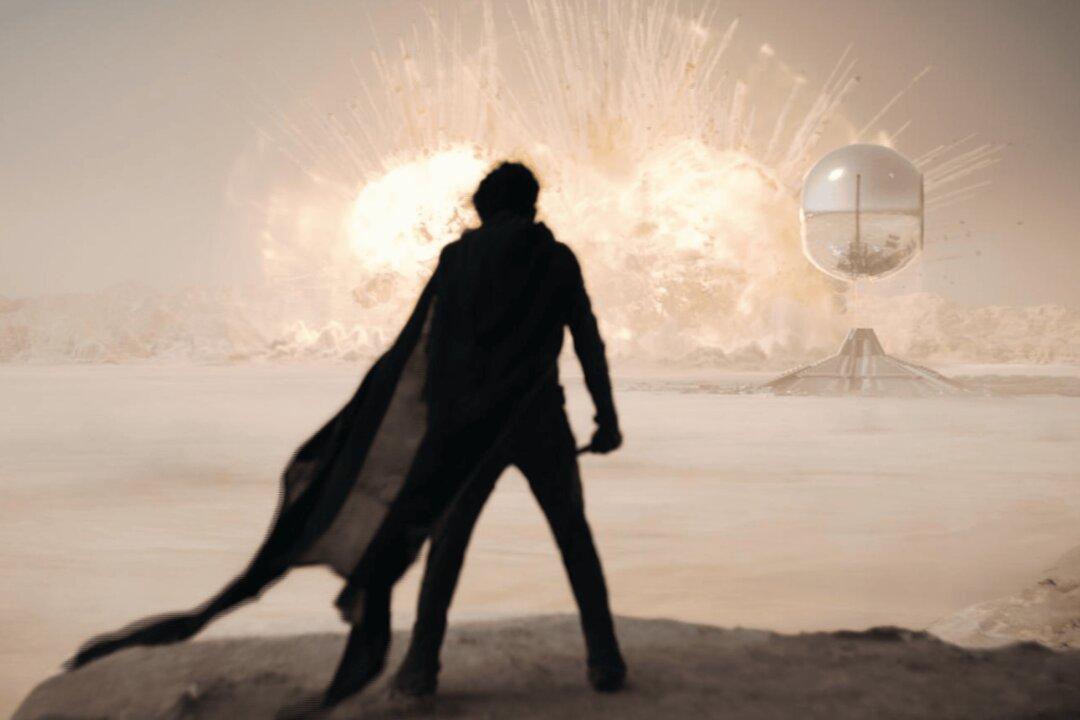I recently took my 6-year-old to see “PAW Patrol: The Mighty Movie,” Paramount’s sequel to its 2021 hit “Paw Patrol: The Movie.”
The second film installment of Paw Patrol isn’t as overtly libertarian as the first movie. But it has been a smash success, raking in $166 million worldwide already on a $30 million budget. To my delight, this film also carried an important moral, showing how well-intentioned people can cause problems in the name of “safety.”
The story begins with an evil scientist named Victoria “Vee” Vance stealing an electromagnet from a junkyard so she can retrieve a magical meteor from the sky. She’s caught and put into prison, where she meets the devious Mr. Humdinger, who’s still serving time for his own mad plot to control the weather, which nearly destroyed Adventure City.
Before she was nabbed, however, Ms. Vance succeeded in seizing the meteor, which contains crystals that grant our team of hero pups new superpowers. Sky can fly, Chase can run like the Flash, Rubble can crush things, and so forth.
Things are going fine until the evil scientist and Mr. Humdinger break out of prison in an Andy Dufresne-style escape and manage to steal Sky’s magical crystal, the source of her superpowers. This is where things get interesting.
Sky is crushed that she allowed the villains to get her crystal, but when she tries to assist her team in their effort to retrieve it, Ryder, the team’s leader, forbids her from helping. He says it wouldn’t be safe because she no longer has superpowers.
To make matters worse, Ryder also breaks up a new team of hero pups—the Junior Patrollers—who were being trained by Liberty, who was relegated to mentorship duties because her superpowers hadn’t yet manifested. It just wouldn’t be safe, Ryder tells Liberty.
Ryder’s intentions are pure. He’s just trying to protect his team. But his decision ends up making things worse. Deprived of her superpowers and sidelined by Ryder, Sky decides to take matters into her own hands. While Ryder and the other pups sleep, she steals all the magical crystals and sets out by herself to take back from Ms. Vance the crystal that was stolen from her.
The audience can see where this is going.
“She shouldn’t be doing that,” my 6-year-old whispered to me during the movie. “That isn’t nice!”
To no one’s surprise, Sky ends up losing all the crystals, which fall into the hands of Mr. Humdinger and Ms. Vance. Things don’t end here, of course. Sans superpowers, the Paw Patrol is able to free Sky and defeat Mr. Humdinger and Ms. Vance.
Interestingly, however, they’re only able to do so with the help of the Junior Patrollers, whom Ryder had disbanded in the name of safety.
Many may not see these plot elements as particularly profound, but I believe that the theme was included for a reason. Increasingly, modern society is drifting away from a culture of freedom and toward one of “safetyism,” a term coined by authors Greg Lukianoff and Jonathan Haidt.
“Safetyism,” Mr. Haidt wrote, “inflicts collateral damage on the university’s culture of free inquiry because it teaches students to see words as violence and to interpret ideas and speakers as safe versus dangers rather than merely as true versus false.”
Safetyism goes beyond emotions and free speech, of course. The government routinely violates individual rights in the name of safety.
During the COVID-19 pandemic, we witnessed the widespread propaganda of “stay home, stay safe”—a slogan designed to make people overlook the clear violation of civil liberties from government lockdowns (not to mention the obvious economic tradeoffs of forcing people to stay home). Governments also forced people to take vaccines in the name of public safety.
None of this is to endorse recklessness, of course. Safety is important. I choose to wear my seatbelt because I want to be safe. And when I pump my gas, I try to be careful about it.
But Paw Patrol reminds us that doing what’s safe isn’t always doing what’s right, and that’s a lesson many desperately need—especially those seeking to exploit the natural human desire to be safe to undermine individual rights.







